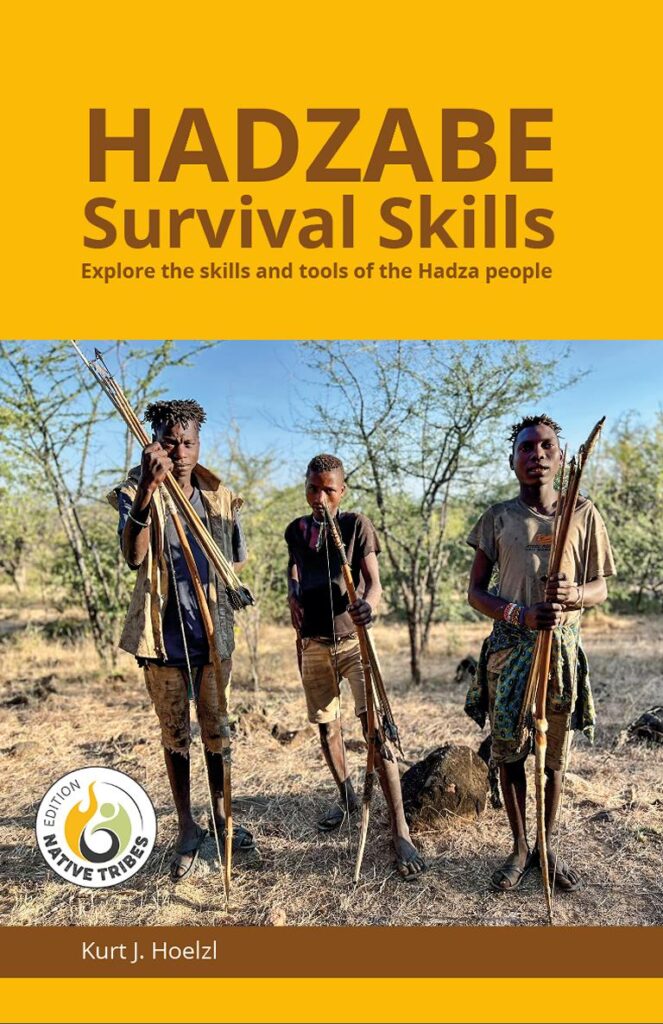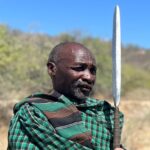Improvised firearms are the new hunting weapon of choice for the wild living Orang Rimba people in Jambi province, Indonesia. In one of the following articles, I will present their traditional hunting techniques and typical hunting weapons. Here, I will focus on improvised firearms, known as Gobok in Bahasa Indonesia.
At the end of 2023, I already visited this family clan, and now, at the end of 2025, I met the same band again. Profound changes occurred within these two years, which include their hunting techniques and the availability of weapons. In 2023, only the clan leader had an improvised firearm. Now, 2025, every one of the five men in the clan has one, or is about to finish his own.
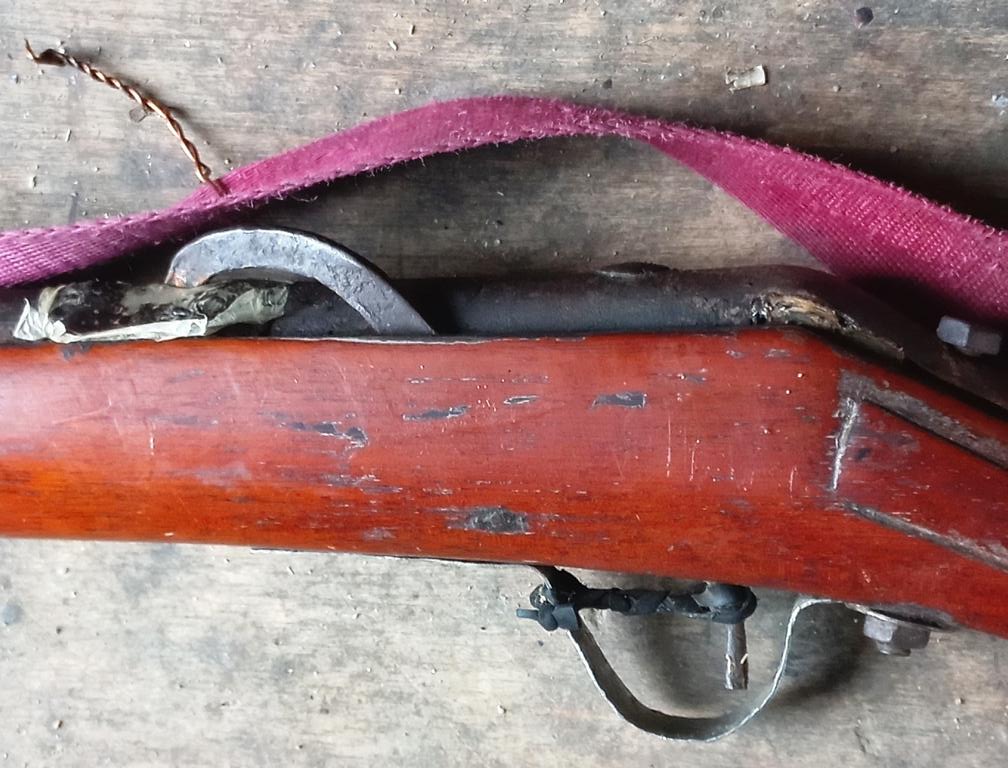
Basically, these are primitive derivatives of percussion lock (‘caplock’) muskets. In the following, I will first describe these muskets and their ammunition, and thereafter provide more general information about them. Each of them is a custom-made model with similar technical features.
Musket description
The description is based on three muskets ready to hunt and two muskets in the manufacturing process, in this Orang Rimba family clan possession.
Main sizes
The average length of the muskets from the end of the buttstock to the muzzle was about 145 cm or 4.76 feet long. Barrel length from the firing hole to the muzzle was, on average, 88 cm or 2.89 feet.

I couldn’t determine the exact caliber size under the primitive conditions we were in, and didn’t have a proper measuring device. But, measured with the checkered grid of my notebook, the bullets (lead slugs) had a diameter of about 9 mm, which translates to an approximate .38 caliber. These slugs fitted very loosely into the barrel. They slid easily in and out, but the soft lead material will expand on firing. During one shot observed, no excessive gas flash could be seen from the muzzle. This means that the bullet fits tightly against the barrel wall when shooting.
Barrels
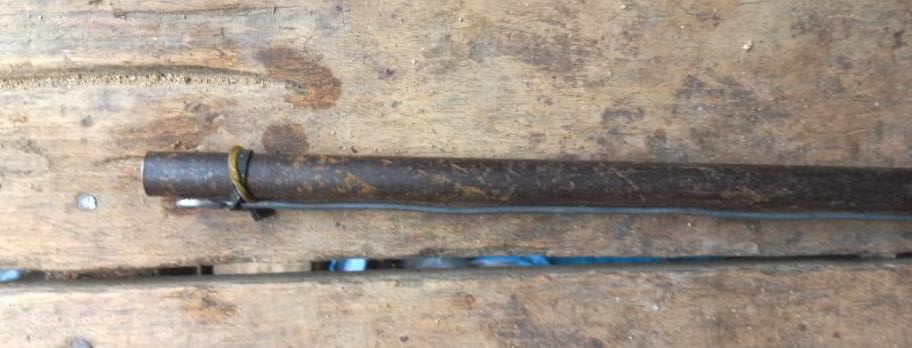
The barrels are unrifled. These firearms are, therefore, by definition, not a rifle, but a musket. Perhaps ‘barrel’ is also not entirely accurate. These are just thick-walled pipes, bought in hardware stores at the fringes of the forest. A local mechanic will heat up the hind end with an argon welding torch, smash the pipe walls together, and close them tightly by welding. On top of the barrels near the rear end, the firing hole is located.
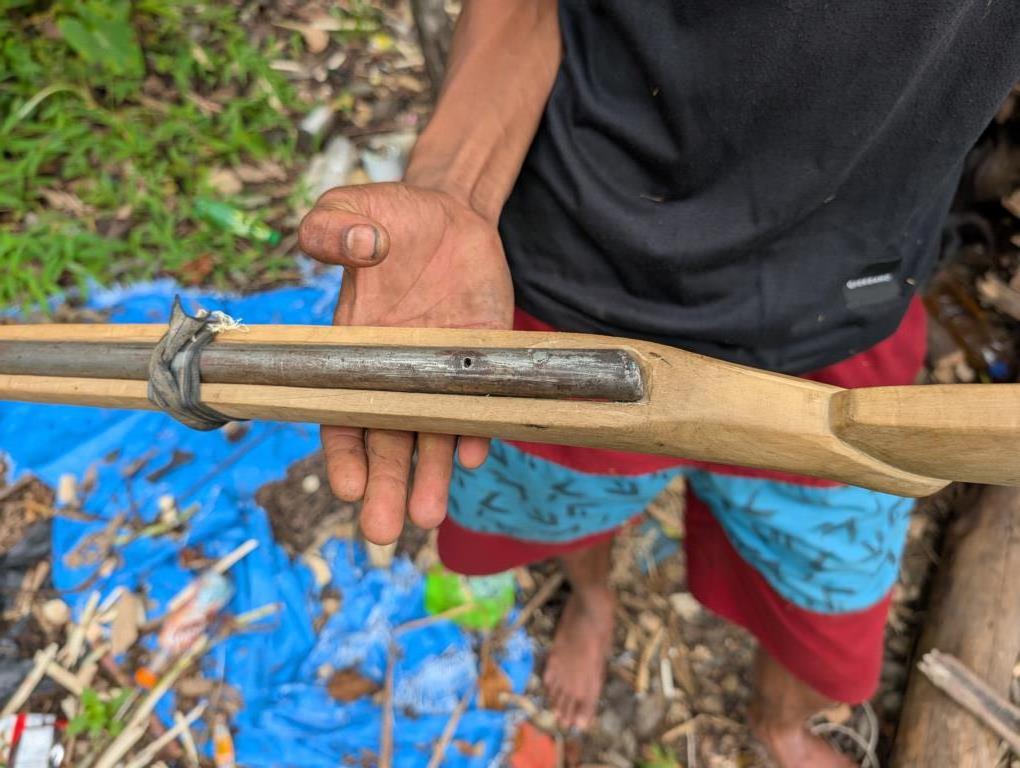
After fitting the barrel into the shaft, a tail will be added by welding at the hind end of the barrel, which will hold the shaft screw to keep the barrel and shaft together.
Underneath the barrel, a simple metal ramrod for setting the wad was located on one of the Goboks. Other hunters will just cut a thin bamboo culm if necessary for reloading their improvised firearm. No cleaning equipment for the barrel of the blackpowder residues was available or seen as essential by the Orang Rimba men I spoke to.
There were no sights seen on the barrels. Aiming is accomplished by looking over the long barrel’s upper side and aligning it with the target.
Percussion lock firing system
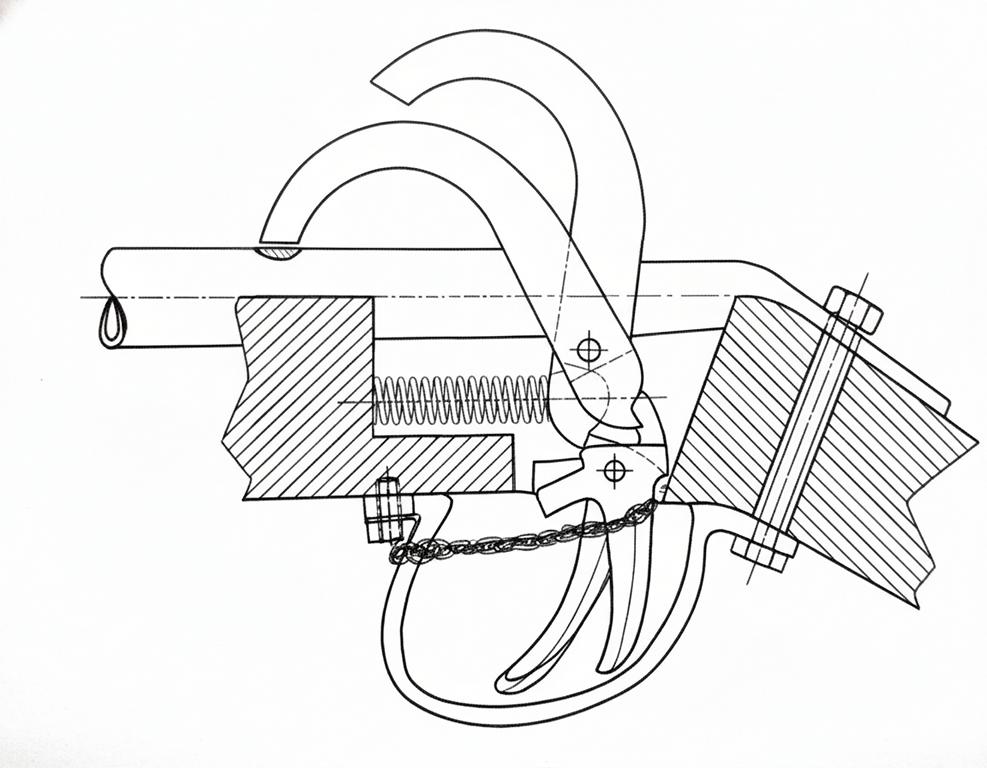
I made a rough sketch to show the basic function of the percussion locks in these Goboks. It consists of two mechanical pieces of steel, one coiled spring, and a piece of a rubber band for tensioning the trigger. The rear end of the trigger guard acts as a counter for the shaft screw.

The hammer is a crooked piece of steel that moves forward from the side of the barrel and hits the percussion hole in the middle of the barrel. The front face must be larger than the percussion hole to cover the ignition flash and keep it away from the shooter’s face. Usually, it is a flat piece of steel with a round face. But as can be seen in the photo above, iron nails are also used for that purpose.
Below the pivot pin, the hammer has a slot in the middle that holds the spring pin in place on the hammer during the turning action. The coiled spring itself is wound around the spring pin and provides the necessary energy for the hammer to hit the percussion hole after release.

According to the information provided by Udin (the head of the visited Orang Rimba family clan), these spring coils are produced from iron nails, which are hardened after shaping.
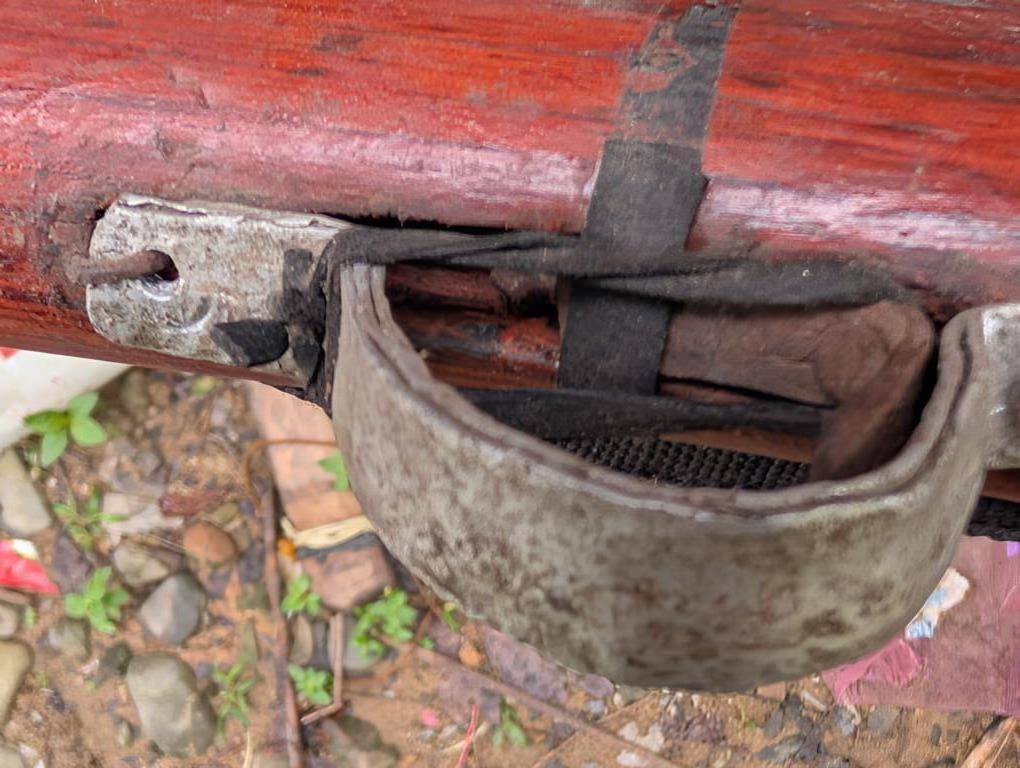
The second piece of steel is the trigger, which is held forward by a rubber band. Its notch, pivot point, and function can be seen in the schematics above. All rubber bands used by the Orang Rimba people for either slingshots or trigger bands were made from the inner tubes of motorcycle tires.
For the next shot, the hammer must be lifted with one hand, and with the fingers of the second hand, the trigger notch must be aligned with the hammer notch. This is not a high-tech solution, but it suffices for the requirements of the Orang Rimba.
Shafts

After receiving the re-modeled steel pipes from a village mechanic, the shafts are crafted by the future gun-owner from various local hardwood species. This usually takes a long time to chip away the wood from a tree trunk to the final shape, which fits exactly the owner’s statue and requirements. All muskets I saw had a half-stock and a relatively flat pistol grip. All of them were decorated with simple motives, and one even had a piece of rubber as a shock absorber at the rear end. Often, the stocks are covered with lacquer for waterproofing.

The barrels are always held in place at the front end by a clamping device that surrounds the barrels and forestocks, and at the rear end by a shaft screw. Carrying slings are commonly used.
How are these muskets manufactured?
For manufacturing these muskets, the following steps are taken:
- The future owner buys a suitable steel pipe in a hardware shop.
- He takes the pipe to a local mechanics, who will tightly close the rear end of the pipe and drills a percussion hole.
- The owner manufactures the stock in the forest and fits the barrel into the stock.
- A mechanic in a village welds a tail to the end of the barrel and drills a hole for the shaft screw. He will then fit the tail into the shaft, cut away the wood for fitting the lock, manufacture the lock with all four components, and ensure the muskets’ mechanical parts function properly.
- The owner finishes the musket with decorations, surface treatment, and a sling. It’s now ready for use.
Description of shooting consumables
For these improvised firearms, also improvised consumables are used. It is fascinating to see how much creativity is involved in procuring or producing these consumables.
Gun powder
Orang Rimba purchase black powder in shops in villages or have it supplied by their boatmen, who visit them around every fortnight. This will be a barter trade against either Jernang fruits, Jernang resin, three types of Damar resin, bushmeat, or other products.
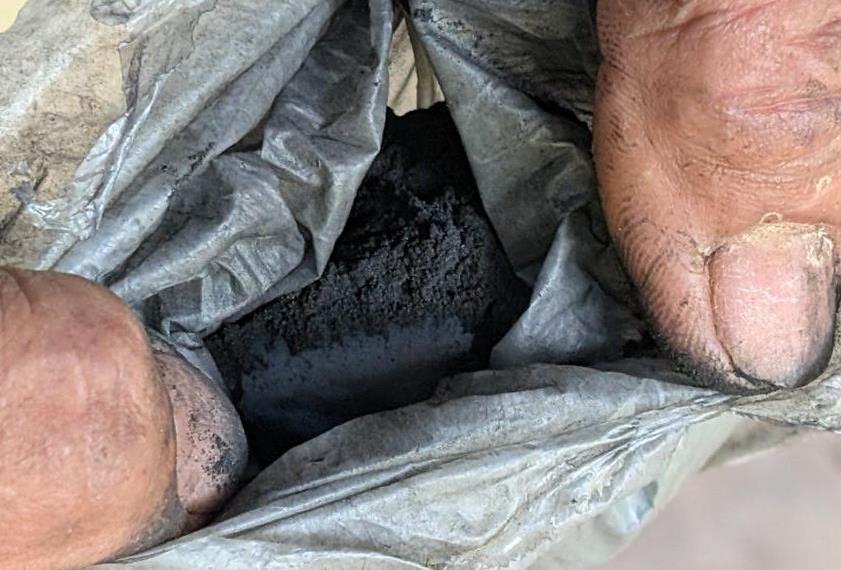
Then, they burn dry wood from Giant Mahang (Macaranga gigantea) and mix 100% of this wood ash with 25% of Black Powder. This mixture will be ground until it is very fine. Then, they add water to it, forming a thick paste of wood ash and black powder. This paste will be carefully dried in an iron wok over fire. When fully dry, they remove the crust from the wok and grind it into a fine powder. This powder will be dried once again in the sun. Finally, at this stage, it is ready to use. This is obviously a hazardous process, especially considering the harsh circumstances in which they live.
Wads
For wads, various dry and fluffy materials are used. These can be fluff from the leaf sheaths of Rotan Manau (Calamus manan), or many other palm leaf sheaths. Another favorite is coconut husks.
Bullets
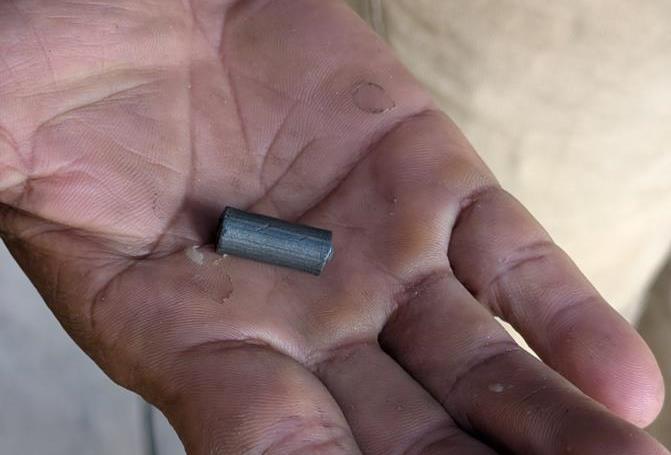
The favorite material for bullets is lead, as it is easy to mould, heavy, and soft enough to expand in the barrel during the shot. The family clan we were with either remelted fishing sinkers, which they traded from their boatman. Or they ‘organized’ the batteries of excavators from gold mining operations and remelted the lead plates inside.
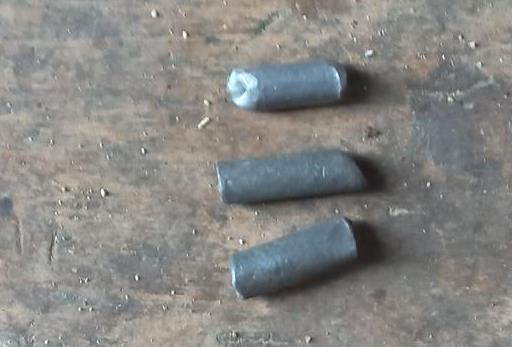
After remelting, the liquid lead was poured into bamboo stems with an inner diameter suitable for their barrels. After cooling, the resulting lead sticks were cut in a length-to-diameter ratio of about 3:1.
As there are no percussion caps available, they use the powder from the flame heads of matches for their purpose. They carefully scratch off this powder and break it down into a fine powder with a dry wooden stick. Which is obviously dangerous. They keep this ignition powder separately from black powder in a small wooden container.
Ignition when shooting occurs in such a way that the ignition powder is compressed between the falling hammer and the barrel. It will deflagrate on impact, setting off the blackpowder charge, driving the bullet out of the barrel. After every shot, the percussion hole is cleaned with a piece of twisted copper wire.
Preparing the musket for possible use and shooting
The preparation for the possible use of these improvised firearms differs slightly from that of other percussion lock guns. The following steps are taken:
- Filling black powder with the help of a folded leaf for a length of about 10 cm or 2 inches of the lower end of the barrel.
- Ramming down a piece of wad material to hold the powder in place.
- Sliding a bullet down the barrel.
- Slightly overfilling the percussion hole with ignition powder and putting a piece of clear plastic over it for sealing.
In this condition, the wild living Orang Rimba people in Jambi province in Indonesia, prepare their Goboks for possible use. They hang them somewhere in their shelter so that they are available at any time.
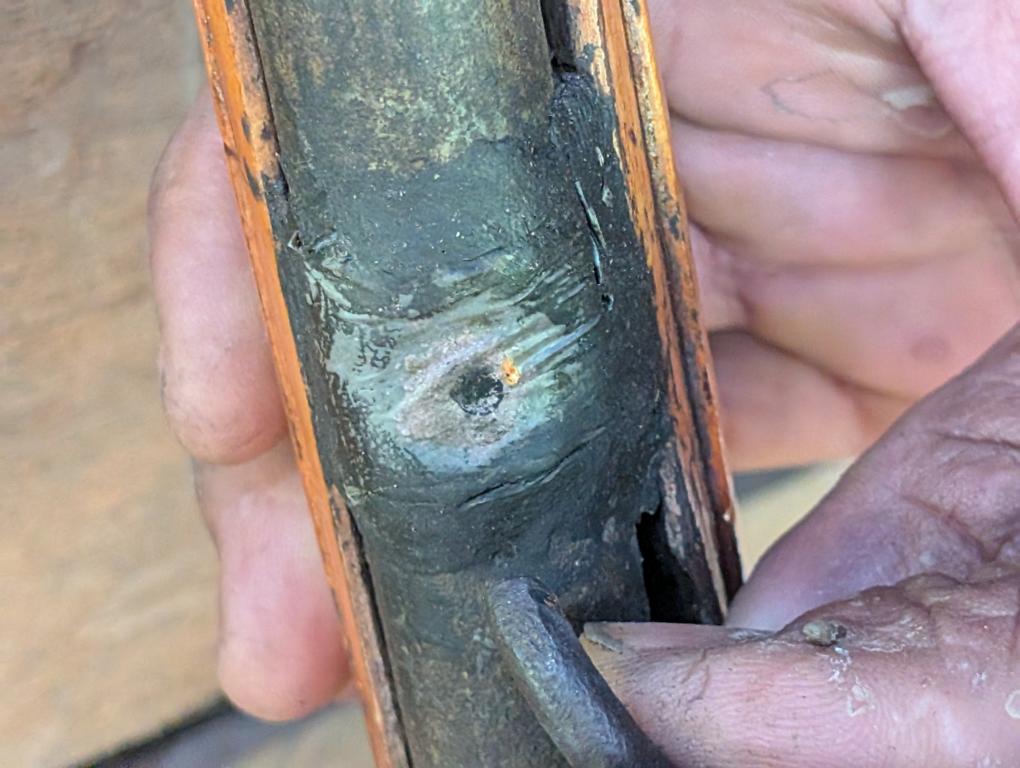
In the case of a planned hunt, they will put another piece of wadding in front of the bullet, so they do not lose the loose bullet when walking through the rainforest. In such a case, they often remove the plastic for shooting and may top up the ignition powder for a sure ignition.

If the musket is needed in camp in an emergency (such as a sun bear appearing or a similar situation), they shoot with the plastic sheet still covering the ignition powder.
When asked about the shooting range of these improvised firearms for hunting, the unanimous answer was: ‘The same as a normal hunting rifle’. Whatever this means. But in the rainforests, the shooting range with any kind of guns is very restricted. This may also be the reason why missing sights on the barrel are not a hindrance.
Other types of improvised firearms
Besides these simple muzzle-loading improvised firearms, outsiders bring into the forest more advanced and powerful firearm types. Our boatman, Syahril (spelled: Sahrai), for example, had a home-made breechloading carbine in 7.62×51 (.308 Win) in possession, which could be broken down into two pieces. This was a very short and easy-to-hide parcel in a blanket, and both pieces (barrel/front shaft, as well as breech/lock/shaft) could be screwed together in a minute. It had non-adjustable mechanical sights. He also had a strip of 20 military-issued FMJ cartridges with him. On a late afternoon, one of his Minangkabau friends came to our shelter to pick up the gun and cartridges for ‘deer hunting’. They were discussing the reflection of light from their eyes when lit by a torch. Which they described as coming on and off again. Deer were therefore not his target, as these show a steady reflection of their retina under torchlight. But tigers always look around, and therefore, tiger eyes appear to be blinking. A sad story. This is the reason why I named the person above. Unfortunately it was not possible to take a picture of this rifle.
Use of these muskets
Using Gobok muskets for hunting is considered by many mainstream Indonesians as a violation of Adat law. They state that the use of firearms by the Orang Rimba people is not a local practice and tradition, and is also not compatible with Islam. This is partially incorrect, as these muzzleloaders have been used by them for a long time. The animal hunted most often by them, however, is sometimes a deer and usually a wild boar. Besides security concerns, this practice of bagging wild boars for the table is one of the motivations for declaring Goboks contrary to Adat law.
Lessons learned about improvised firearms of the Orang Rimba people:
- Although often called rifles, these weapons are smoothbore muskets with a percussion lock variant.
- The metal parts of these muskets are manufactured by village mechanics, and the stock be shaped by the future owner of the gun.
- The lock only consists of two metal parts, one spring, and a rubber band.
- Based on purchased black powder, the powder for driving the bullet consists mainly of Giant Mahang wood ash.
- As an ignition powder, the flame heads of matches are used.
- Much more damaging to the wildlife are more advanced rifles brought into the forest by non-Orang Rimba.
.


